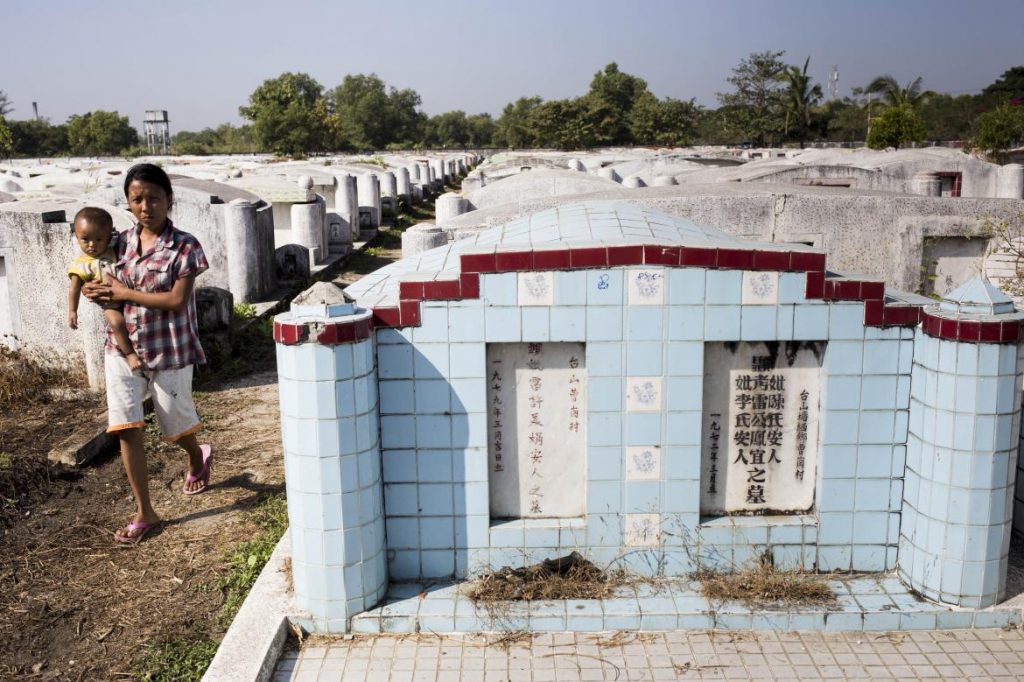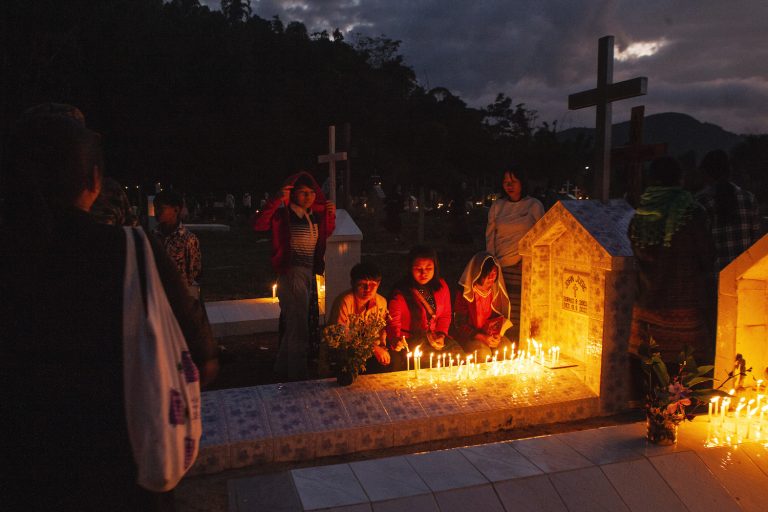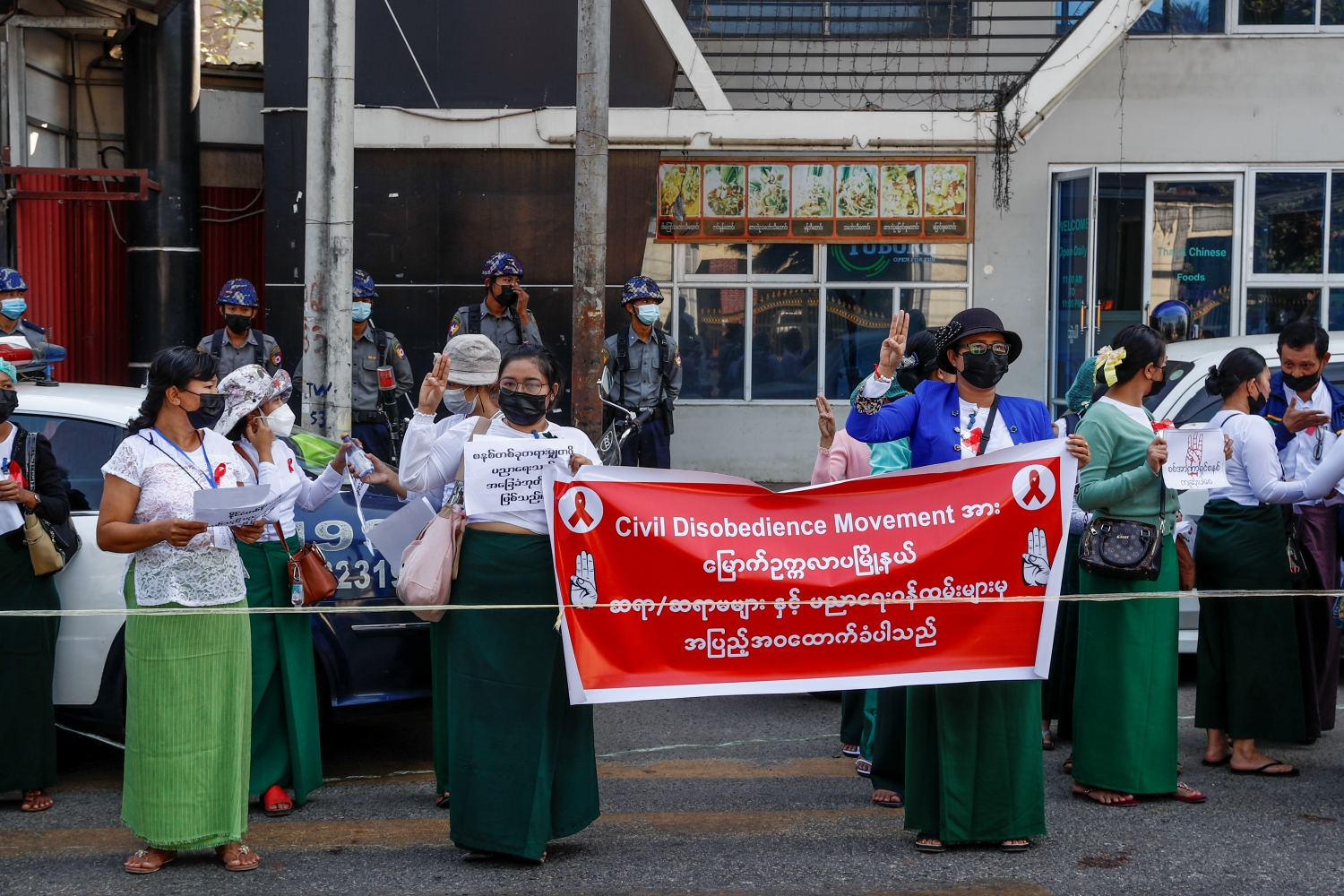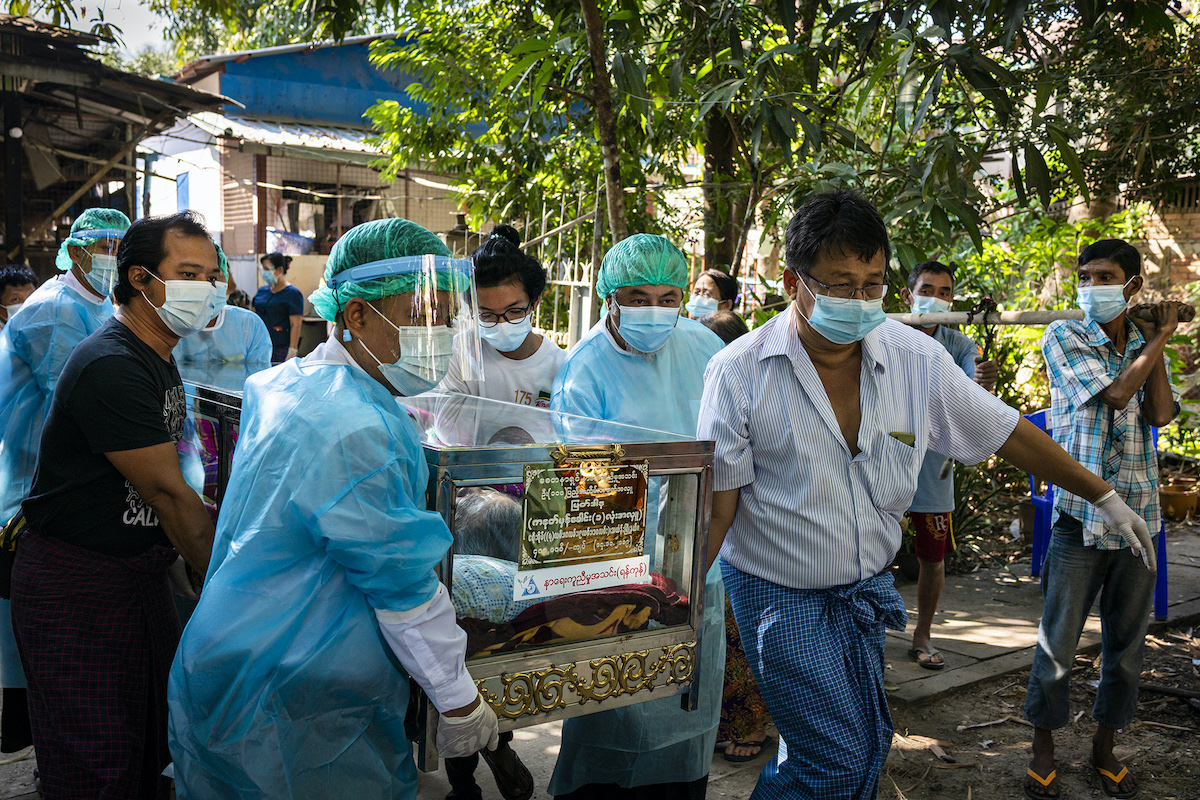Most of Yangon’s cemeteries were relocated on junta orders about 25 years ago and almost all have been replaced by big commercial developments.
By MRATT KYAW THU | FRONTIER
Photos ANN WANG
The smell of sewage from a broken pipe permeates the atmosphere in a corner of the vast hillside compound behind the jammed roads and the big Ocean supermarket at one of Yangon’s busiest intersections.
Most passersby are oblivious to what’s behind the high walls surrounding the Tarmwe Muslim Cemetery, which is nearly 100 years old. It is one of the few remaining cemeteries in the Yangon urban area following the forced relocation of others to the city’s outskirts when the country was under junta rule.
The final slumber of thousands of citizens was interrupted for the sake of development and the sites of former cemeteries have become supermarkets, shopping centres and condominiums.
The relocation of cemeteries in Yangon was ordered by the State Law and Order Restoration Council, as the junta called itself from 1988 to 1997.
Support more independent journalism like this. Sign up to be a Frontier member.
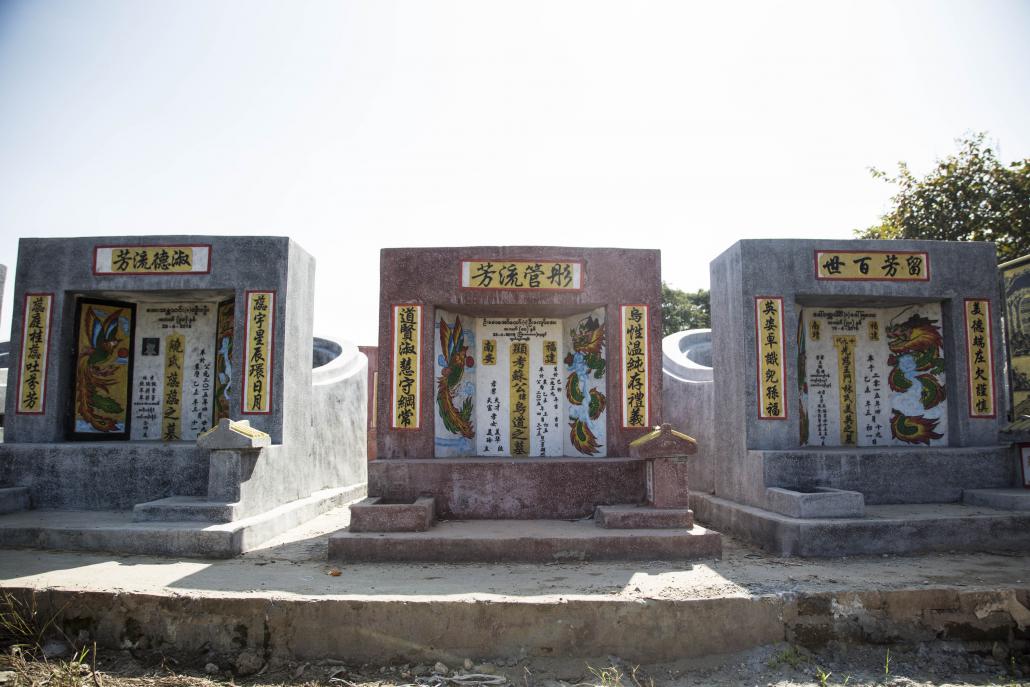
Colourful Chinese graves at Yayway cemetery, near Aung Mingalar highway bus terminal, on the outskirts of Yangon. (Ann Wang / Frontier)
For 20 years, U Aung Kyi Lynn, 51, lived near one of relocated cemeteries, on a compound on Banyardala Road in Tarmwe Township now occupied by the Yangon Ear, Nose and Throat Hospital.
“Before they (SLORC) removed the graves and gravestones, they put a notice in a newspaper giving the relatives a week’s notice if they had any special requests for their loved ones remains,” U Aung Kyi Lynn told Frontier.
He recalled that a few families had taken the opportunity to recover the remains of ancestors for reburial at Yayway cemetery in Yangon’s North Okkalapa Township when the relocation took place in 1992.
“I guess maybe twenty Dodges [hearses] lined up on Banyardala Road in front of the cemetery,” said U Aung Kyi Lynn.
Many of those who chose to have remains re-interred were of Chinese descent, who observe strict rituals for the exhumation and reburial of loved ones.
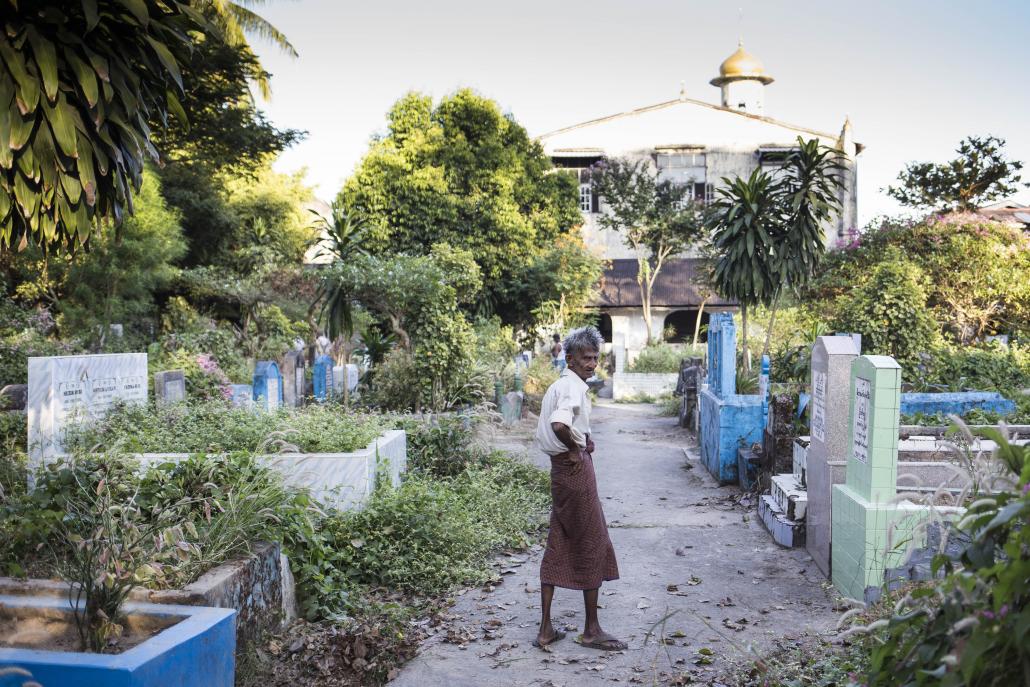
Ann Wang / Frontier
For most Buddhists, the attitude towards the relocations was one of acceptance.
U Tun Aung Myin, 71, said he did not feel anything when his grandfather’s remains were moved from the Tarmwe cemetery to Yayway. “I heard about the government order and, at first, my dad and mum talked about it but later we forgot about it,” he said. “That’s all I remember about my grandfather’s tomb.”
The Banyardala Road cemetery was multi-denominational but other relocated graveyards were faith-based. They included two for Muslims and two used by the Chinese community, including its biggest cemetery in Yangon.
The sites occupied by all four cemeteries have been redeveloped.
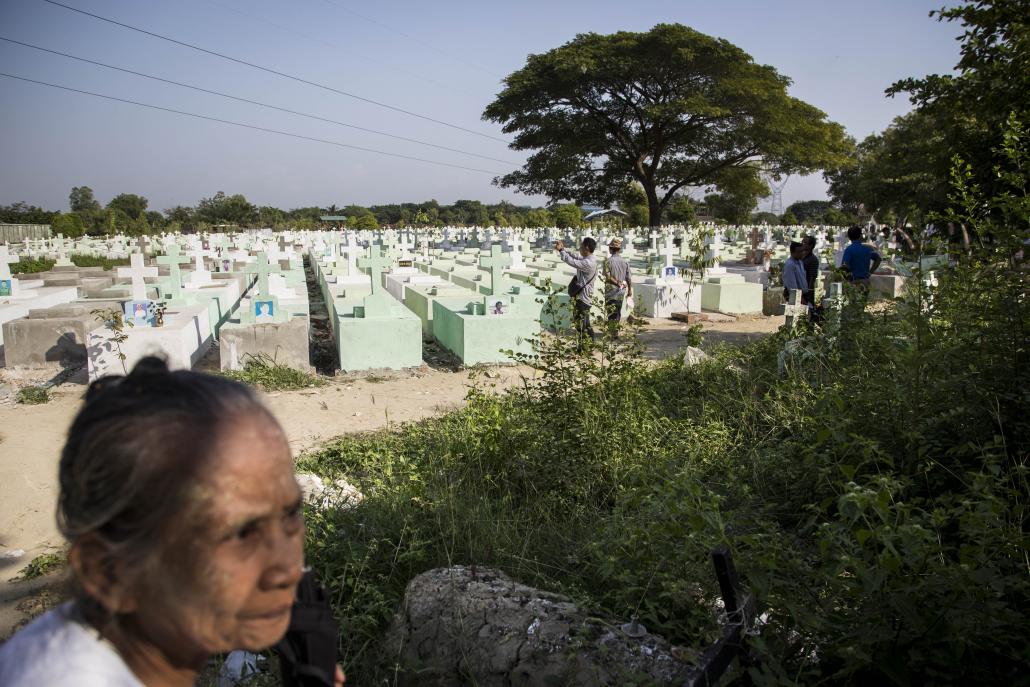
Ann Wang / Frontier
A site occupied by a Muslim cemetery on East Race Course Road was selected by the military government for a national library but the plan was shelved after the capital was moved to Nay Pyi Taw. The luxury Polo Club condominium project is being developed at the site.
The Kandawlay Muslim cemetery, near Theinbyu Road in Mingalar Taung Nyunt Township, is the site of a 21Century supermarket.
The Kyandaw cemetery in Kamaryut Township was Yangon’s biggest until it was demolished in 1996 and 1997 to make way for the Yangon Drugs Elimination Museum. It is now the site of Junction Square shopping centre. Yangon’s biggest Chinese cemetery, at 9 Mile, is the site of an Ocean supermarket.
U Xaio Ming, 70, whose parents were buried at the 9 Mile cemetery, one of four for the Chinese community in Yangon, said having to relocate their remains caused distress in his family.
“When we heard about the government’s announcement, we were very sad and upset about that, but we had to know our situation as foreigners in Myanmar,” said U Xaio Ming, who was born in Myanmar and was once chairman of one of Yangon’s biggest Chinese temples.
“For a Chinese, the relocation or the re-burial of the graves of ancestors is a terrible thing,” he said. “Actually, destroying the cemeteries of some religions is like destroying part of their history.”
U Xaio Ming said the “entire Chinese community” should have tried to ensure that the cemetery was retained so the graves of ancestors could remain undisturbed but it also knew that any such move would have had no effect on the relocation decision.
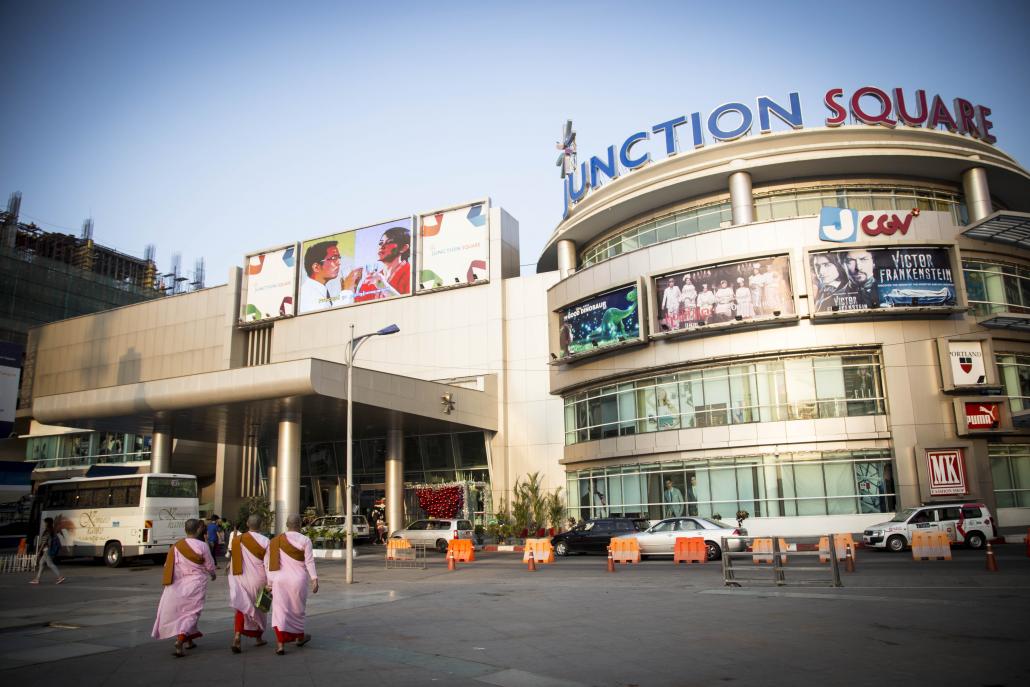
Junction Square shopping centre in Kamaryut Township, Yangon. This was previously the site of the Kyandaw cemetery. (Ann Wang / Frontier)
Although it was unaffected by the relocations ordered in 1990, the custodians of the Tarmwe Muslim Cemetery and its prime site overlooked by a supermarket are concerned to ensure its future is secure.
There had been “some problems” about building on the cemetery land, said a watchman who asked not to be named and declined to elaborate.
“For our community, this cemetery is priceless,” said the watchman, 75.
The Muslim cemetery has a connection with one of the most dramatic events of pre-independence Burma.
It is the final resting place of two the martyrs slaughtered during the assassination of Bogyoke Aung San in Yangon on July 19, 1947. They were U Razak (Abdul Razak), the minister for education and national planning in the pre-independence interim government, and Yebaw Ko Htway, one of the Bogyoke’s bodyguards.
Burmese Buddhist funerals: A primer
A Buddhist funeral in Myanmar typically lasts for one week, depending on the family’s wishes. Prior to the funeral, which usually happens on the third or fourth day after the death, the body is prepared. The deceased is dressed in their finest clothes and a coin, known as a gadaw ga, is placed in their mouth to pay a “toll” for them to cross into the next life.
The ceremony usually takes place on the third or fourth day after death, and prior to that monks sit next to the body and say a chant. These chants are conducted in order to help the deceased’s “good” energies to be released from the body. One example of a chant goes:
“Even the gorgeous royal chariots wear out; and indeed this body too wears out. But the teaching of goodness does not age; and so goodness makes that known to the good ones.”
During the seven days, families will leave the doors and windows of their house open to allow the deceased’s spirit to leave.
Cremation is the most common form of funeral, although burials do occur in parts of the country. At the ceremony, mourners wear dark clothes and read Buddhist scriptures on the impermanence of life.
A recitation is given by monks while the body is being prepared for the funeral fire, and then the burning takes place. After the ceremony, mourners will give gifts to the deceased’s family. Traditionally, the gifts include flowers or food, but in some parts of the country, particularly when families are poor, money will be given or mourners will contribute to the funeral’s expenses.
At some point after the ceremony — usually a week but again depending on the family — the deceased’s family makes an offering to the monks as a form of thanks for the blessings they made.
Unsurprisingly, funeral ceremonies in Myanmar share many similarities with those in other Buddhist countries in the region, such as Thailand, Laos and Sri Lanka. However, as noted in the book Buddhist Funeral Cultures of Southeast Asia and China, ceremonies in Myanmar tend to conform less to the general traditions of the region: they are generally shorter and include less readings than in other countries.


